Nationality Japanese Name Tetsuya Ishida | ||
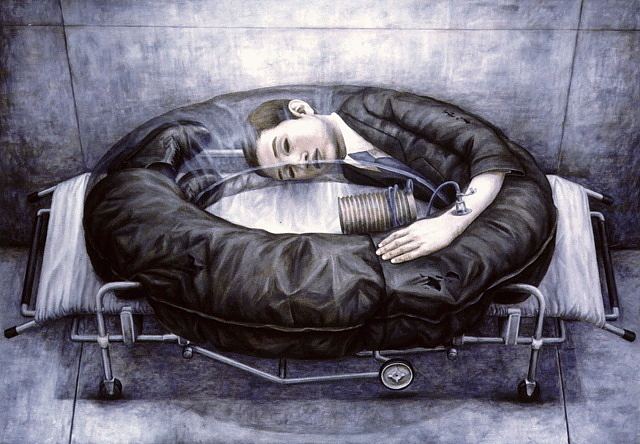 | ||
Artwork Criminal Abortion, A Man Can't Fly Any | ||
sub urban an unauthorized introduction to tetsuya ishida
Tetsuya Ishida (石田 徹也, Ishida Tetsuya, June 16, 1973 – May 23, 2005) was a Japanese painter, best known for his surreal portrayal of an ordinary Japanese life. He died in 2005 when he was struck by a train at a level crossing.
Contents
- sub urban an unauthorized introduction to tetsuya ishida
- Dap tetsuya a short film song about tetsuya ishida
- Biography
- Art
- Accomplishments
- References
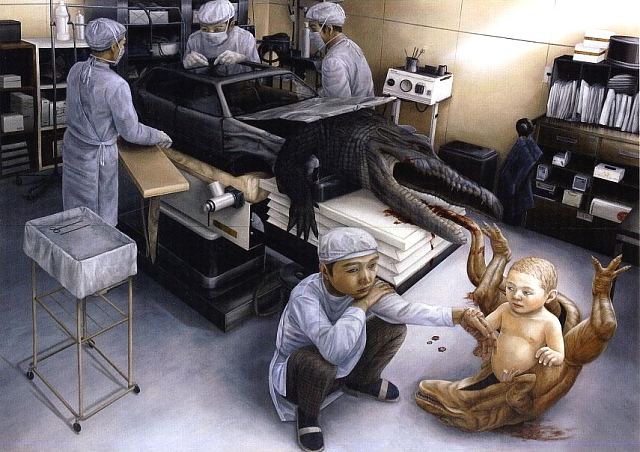
Dap tetsuya a short film song about tetsuya ishida
Biography
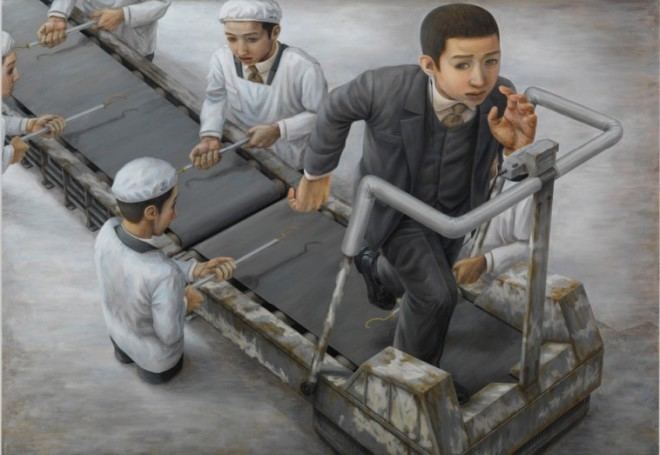
Tetsuya Ishida was born in Yaizu, Shizuoka, the youngest of four sons. His father was a member of parliament and his mother a housewife. He graduated from Yaizu Central High School in 1992. Ishida stated in interviews that it was during this period that his parents and school principal put pressure on him to thrive academically and develop a career as a teacher or chemist. This experience later appeared in some of his paintings that explore the society's expectations of youths.
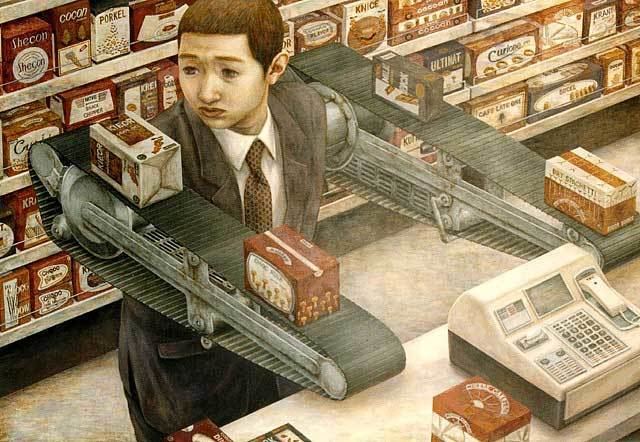
Ishida entered Musashino Art University where he majored in Visual Communication Design. He graduated in 1996. Ishida's parents, unhappy about his career choice, refused to provide financial support during his university period. Ishida recalled this with amusement in an interview.
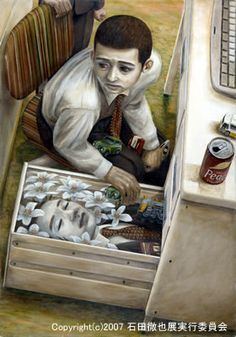
Ishida and film director Isamu Hirabayashi, a friend from his university days, formed a multimedia company to support their work together as collaborators on film/art fusion projects. Facing economic difficulties during Japan's 1990s recession, their joint venture shifted to become a graphic design company. Ishida left the company to develop his own career as a solo artist.
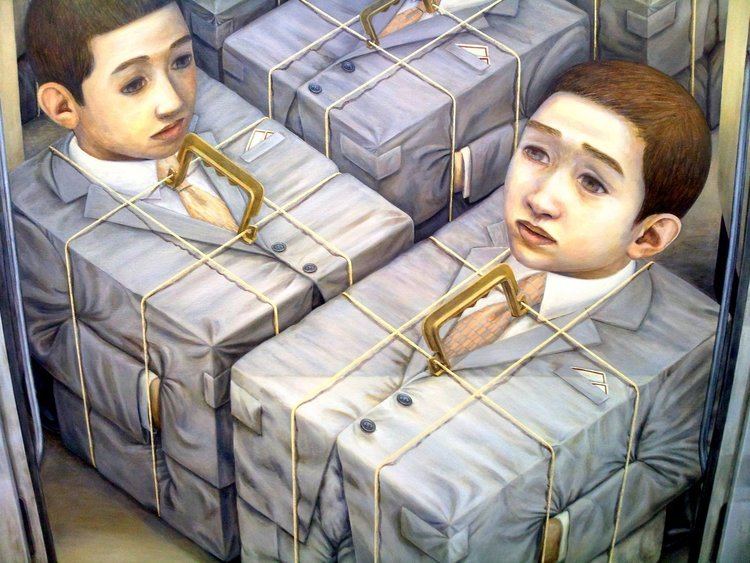
From 1997 to 2005 he won a growing following, a number of awards and exhibitions, and positive praise of his works, which enabled him to work full-time as an artist until his death.

On May 23, 2005, he was instantly killed by a train at a level crossing in Machida, Tokyo. He was 31 years old.
Art
Ishida's works feature three major themes: Japan's identity and role in today's world; Japan's social and academic educational structures; and Japanese people's struggles to adapt to social and technological changes in Japanese contemporary life.
Ishida's works convey isolation, anxiety, crisis of identity, skepticism, claustrophobia and solitude. Ishida explored several motifs, including portrayals of school-boys and business-men as a part of a factory and young people as physically integrated with everyday household objects. Though the subjects in this series appear to resemble Ishida's own face, Ishida denied these works were self-portraits.
Ishida shared anecdotes of his parents expressing bewilderment over his art style and the dark nature of his works. His mother was particularly upset by one of his self-portraits as she felt it was too dark, but he assured her that it was him at his happiest because he felt he could communicate better through his painting than he could in person. He later reported that his parents came to accept his works as part of his personality and that they, particularly his father, were able to appreciate his works even though they still didn't understand his art.
In a snippet from an archived television interview used during Tokyo TV's Kirin Art Gallery's feature "The Grand Art Masters", Ishida had stated that regardless of whether he liked painting or not, he felt compelled to continue painting "people at mercy of Japan's contradicting nature of its social systems for as long as they exist".
There are some aspects of his works that still intrigue his art critics. One of the most discussed topics is a recurring motif found in the majority of Ishida's works: a plastic shopping bag. Ishida had consistently refused to explain the purpose and the meaning of the shopping bag. With Ishida gone, the question mark over the shopping bag motif is likely to remain for good.
Since his death in 2005, a large number of unpublished works have been uncovered in his home, which brings the estimated total of paintings he produced during his ten-year career as an artist to 186.
In 2007, Ishida's family donated 21 of Ishida's works to the Shizuoka Prefectural Museum of Art (静岡県立美術館|Shizuoka-kenritsu Bijutsukan) in their hometown as a permanent exhibition.
Accomplishments
In 2006 at Christie's Hong Kong "Asian Contemporary Art" auction, Christie's pre-auction sale estimate of the late Ishida's painting "Untitled 2001" (oil on canvas 130.5 x 190.3 cm (51 1/4 x 75 inches)), which was listed as lot 496, was HK$60,000 - HK$80,000 (US$7,745-US$10,326). On November 26, however, "Untitled 2001" was sold for HK$780,000 (US$100,681).
In 2008, the same painting was put up in Christie's Asian Contemporary Art auction. It was estimated that "Untitled 2001" would be sold for HK$2,000,000-HK$3,000,000 (US$259,231-US$388,847). It was sold for HK$2,900,000 (US$375,885).
In 2009, his family was awarded the purple Japanese Medal of Honor, a decoration reserved for those who have contributed to academic and artistic developments, improvements and accomplishments.
